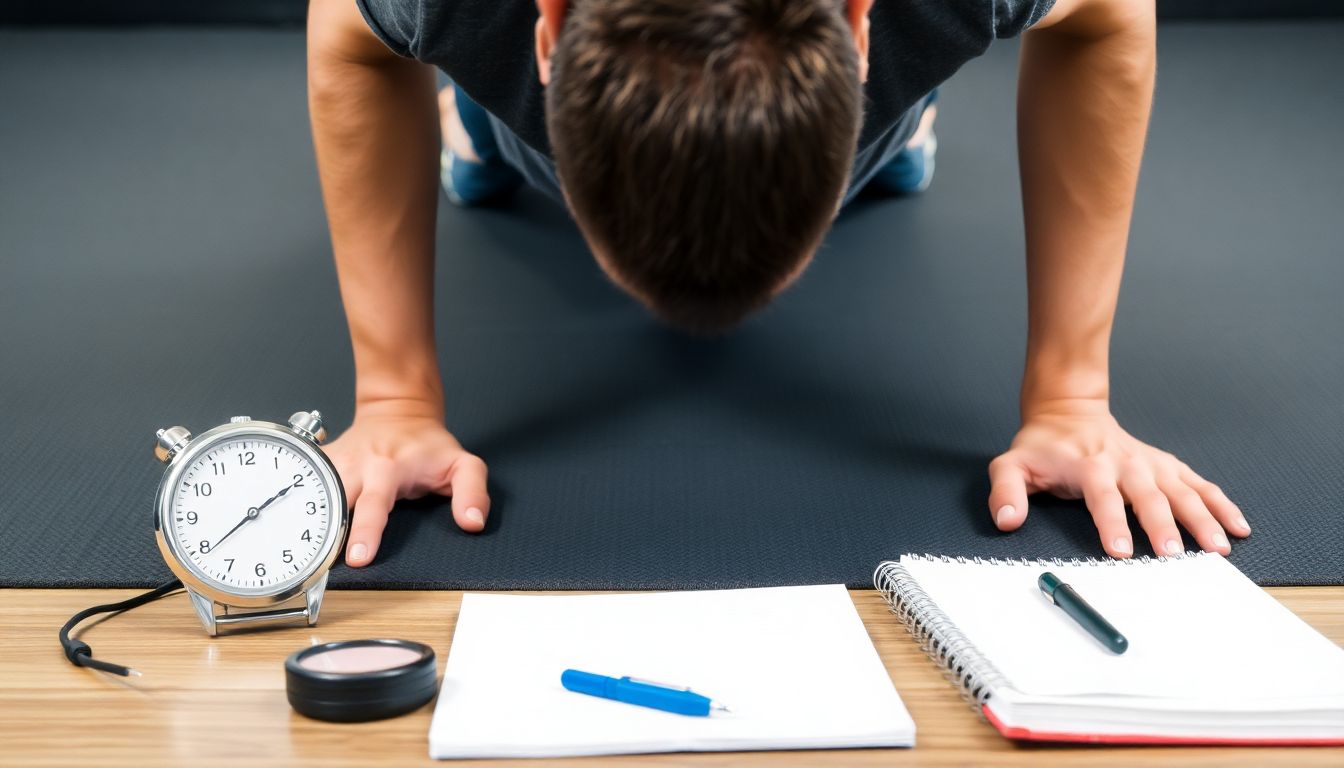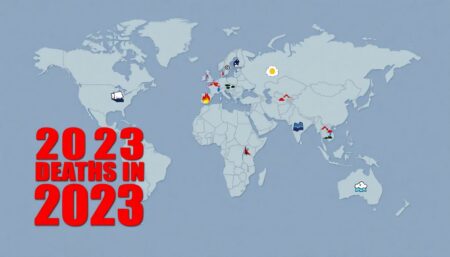In the dynamic world of prepping, where being ready for the unexpected is not just a hobby but a lifestyle, one crucial aspect often overlooked is prepper fitness. While stockpiling supplies and learning survival skills are undeniably important, the physical aspect of preparedness is equally, if not more, vital. After all, when disaster strikes, you’ll need a body that can keep up with the demands of survival. But how many of us, amidst our meticulous planning, have paused to consider our physical readiness? According to a survey by the National Center for Biotechnology Information, only 23% of Americans are physically active enough to meet the federal guidelines for aerobic and muscle-strengthening activity. So, the question remains: are you disaster-ready, physically speaking?
This article, ‘The Ultimate Guide to Prepper Fitness: Staying in Shape for Survival’, aims to address this gap in your preparedness plan. Our purpose is to equip you with a comprehensive understanding of survival physical training, helping you to build a robust, resilient body capable of withstanding the rigors of a disaster scenario. By the end of this guide, you’ll not only understand the importance of prepper fitness but also possess a detailed roadmap to achieve it.
You might be wondering, ‘What does disaster-ready conditioning entail?’ Well, it’s not about becoming the next action hero or marathon runner. It’s about cultivating a body that can handle long hours of manual labor, carry heavy loads, navigate challenging terrains, and respond swiftly to emergencies. It’s about building functional strength, endurance, and flexibility
- the kind that can help you chop wood, climb trees, or even outrun danger.
So, are you ready to transform your body into a powerful tool for survival? Let’s dive in and explore the fascinating world of prepper fitness. Remember, the goal isn’t to become a fitness guru, but to become a survivor who can rely on their body when it matters most.
Mastering Disaster-Ready Conditioning for When It Matters Most
In the grand tapestry of life, we often weave in threads of uncertainty, and sometimes, those threads unravel into full-blown disasters. But what if we could transform ourselves into a human version of a Boy Scout, always prepared? Welcome to the art of disaster-ready conditioning, where ‘be prepared’ isn’t just the Scout motto, but your personal mantra. Imagine this: a sudden power outage, a storm that sweeps through your town, or a sudden need to evacuate. Now, picture yourself, calm and collected, your disaster kit at the ready, a mental checklist ticked off with practiced ease. This isn’t about living in fear, but about empowering yourself with knowledge and tools to turn potential chaos into manageable challenges. It’s about turning ‘what if’ into ‘when’, and ‘when’ into ‘I’m ready’. So, let’s embark on this journey, shall we? Let’s master disaster-ready conditioning, one step at a time, because when it matters most, you’ll be glad you did.

Understanding Prepper Fitness
In the vast landscape of preparedness, one often overlooked yet crucial aspect is ‘prepper fitness’. Unlike traditional fitness goals that primarily focus on aesthetics or sport-specific performance, prepper fitness is a holistic approach that prioritizes functional strength, endurance, and overall physical preparedness for survival situations.
At its core, prepper fitness is about being ready for the unexpected. It’s about having the physical capability to evacuate quickly, carry heavy loads, or even defend oneself if necessary. It’s not about how much you can lift in the gym, but rather how much you can lift and move for extended periods under challenging conditions.
The importance of prepper fitness cannot be overstated. In a survival situation, your body is your most valuable tool. It’s your means of transportation, your shelter, and your source of energy. Being physically prepared can mean the difference between escaping a dangerous situation and becoming a victim of it.
So, how does prepper fitness differ from traditional fitness goals? Traditional fitness often focuses on isolated muscle groups and specific exercises, while prepper fitness emphasizes full-body workouts that mimic real-world tasks. Here are a few key differences:
- Functional Strength: Prepper fitness focuses on building strength that can be applied to real-world tasks, such as lifting, carrying, pushing, and pulling. This is achieved through compound movements like squats, deadlifts, and presses.
- Endurance: Prepper fitness prioritizes cardiovascular endurance, not just for running, but for sustained physical activity. This could mean hiking long distances with a heavy pack, or working non-stop to secure your safety.
- Mobility and Flexibility: Prepper fitness includes exercises that improve mobility and flexibility, ensuring you can move freely and efficiently in various environments and situations.
In essence, prepper fitness is about being ready for anything. It’s about having the physical capability to adapt to changing circumstances and to push through challenges. It’s about being your own best tool for survival.

Assessing Your Current Fitness Level
Embarking on a fitness journey begins with understanding your current physical capabilities. This self-assessment is not about comparing yourself to others, but about setting a baseline to track your progress. Honesty is key here; it’s like trying on a pair of shoes
- you wouldn’t buy a size too small, would you? So, let’s dive into this simple yet effective fitness assessment.
First, warm up with a light jog or jumping jacks to get your heart pumping and muscles loose. Now, let’s start with the Cardiovascular Endurance Test. This is a simple test to assess your heart and lung capacity. Here’s how:
- Find a flat surface and mark a distance of 1.5 miles (2.4 kilometers).
- Jog or run this distance without stopping.
- Record the time it takes you to complete the distance.
Next, let’s check your Muscular Strength and Endurance. We’ll do three exercises: push-ups, squats, and planks.
- For push-ups, do as many as you can with good form. If you can’t do a full push-up, try them against a wall or on your knees.
- For squats, stand with your feet hip-width apart and sit back as if you’re sitting in a chair. Do three sets of 10-15 reps.
- For planks, hold a plank position for as long as you can. Aim for 30 seconds to start.
Lastly, let’s assess your Flexibility. Sit on the floor with your legs extended in front of you. Try to reach your toes without bending your knees. If you can’t reach your toes, don’t worry! Flexibility improves with practice.
Now, take a moment to reflect on your performance. Be honest with yourself
- this is your starting point. It’s not about where you are, but where you’re going. Celebrate your strengths and acknowledge areas for improvement. Remember, every expert was once a beginner. You’ve taken the first step towards a healthier, fitter you!

Setting Realistic Fitness Goals
Setting realistic fitness goals is a crucial step for preppers aiming to enhance their physical preparedness. By establishing clear, well-defined objectives, you can effectively track your progress, stay motivated, and ultimately achieve your desired level of fitness. The SMART goal framework – Specific, Measurable, Achievable, Relevant, and Time-bound – serves as an excellent guide for setting effective fitness goals.
Let’s break down each component of a SMART goal and explore how it applies to prepper fitness:
- Specific: Vague goals like ‘get fit’ or ‘lose weight’ lack direction. Instead, be specific about what you want to achieve. For instance, ‘I want to be able to run a 5k marathon in under 30 minutes’ or ‘I aim to perform 20 push-ups with perfect form in a single set’.
- Measurable: Quantify your goals to track your progress. For example, ‘I will increase my daily step count by 1,000 steps per week’ or ‘I will improve my one-rep max (1RM) for squats by 20 pounds in six months’.
- Achievable: Ensure your goals are challenging yet attainable. Consider your current fitness level and gradually build up to more demanding objectives. For instance, if you’re new to exercise, aiming to run a marathon in a month might be unrealistic. Instead, start with a 5k and gradually work your way up.
- Relevant: Set goals that align with your overall fitness objectives and lifestyle. If you’re preparing for a survival situation, focus on functional strength and endurance. If you’re aiming to improve your health, prioritize goals that enhance cardiovascular fitness and flexibility.
- Time-bound: Set a deadline for achieving your goal. This creates a sense of urgency and helps you stay committed. For example, ‘I will complete a pull-up challenge within the next three months’ or ‘I will reduce my body fat percentage by 5% in six months’.
Here are some examples of realistic, SMART fitness goals for different age groups and fitness levels:
- Age 20-30, Beginner: ‘I will attend three strength training sessions and two cardio sessions per week for the next three months to build a solid fitness foundation’.
- Age 30-40, Intermediate: ‘I will improve my 5k run time by two minutes in the next six months by incorporating interval training into my weekly routine’.
- Age 40-50, Advanced: ‘I will complete a half-marathon in under two hours within the next year, focusing on increasing my weekly mileage and incorporating cross-training exercises’.
- Age 50+, All Levels: ‘I will improve my balance and flexibility by attending two yoga classes per week for the next six months, aiming to master five advanced poses’.
Remember, setting realistic fitness goals is an ongoing process. Regularly review and adjust your objectives as your fitness level improves. Embrace the journey, celebrate your progress, and stay committed to your prepper fitness mission!

Strength Training for Survival
In the realm of survival, strength training is not merely a pursuit for aesthetics or athletic prowess; it’s a crucial skill that can mean the difference between persevering and succumbing to adversity. When faced with challenging environments, our bodies are our most reliable tools, and strength training helps ensure these tools are well-honed and ready for action.
The foundation of any robust strength training regimen lies in compound movements. These are exercises that engage multiple muscle groups simultaneously, mimicking real-life actions and preparing your body for the demands of survival situations. Think squats, deadlifts, pull-ups, and push-ups – these movements are the cornerstones of functional strength.
Progressive overload is another key principle. It’s not about being the strongest person in the room, but about continually challenging your body to adapt and grow stronger. This could mean adding weight to your exercises, increasing reps or sets, or simply improving your form and technique. The goal is to push your body beyond its current capabilities, safely and incrementally.
Bodyweight exercises are a prepper’s best friend. They require no equipment, can be done anywhere, and are incredibly effective at building strength. Consider the following movements:
- Squats: Build lower body strength and power, essential for hiking, running, and carrying heavy loads.
- Push-ups: Develop upper body strength, crucial for climbing, lifting, and defending yourself.
- Pull-ups: Enhance grip strength and back muscles, vital for scaling obstacles and carrying heavy objects.
- Planks: Fortify your core, the foundation of all movement and crucial for maintaining balance and stability.
Incorporating these exercises into your routine, along with progressive overload, will help you cultivate the strength and resilience needed to face whatever challenges life throws your way. So, whether you’re a seasoned prepper or just starting your journey, remember that strength training is not a luxury, but a necessity in the pursuit of survival.

Cardiovascular Endurance for Endurance Events
Cardiovascular endurance, the ability of the heart and lungs to supply oxygen-rich blood to the working muscles over sustained periods, is not just crucial for endurance events, but also a vital component in survival situations. In emergency scenarios, maintaining cardiovascular health can mean the difference between exhaustion and escape, or life and death. It’s the key to sustaining physical effort, maintaining body heat, and keeping the mind alert.
Low-impact cardio exercises, such as swimming, cycling, or brisk walking, are excellent for building cardiovascular endurance while minimizing stress on joints. These activities can be easily incorporated into a prepper fitness routine. For instance, you could start with a 30-minute brisk walk, three times a week, gradually increasing the duration and intensity as your fitness improves.
High-impact cardio exercises, like running or jumping rope, are also beneficial, as they improve bone density and power. However, they should be introduced gradually to avoid injury. Here’s a simple way to incorporate them:
- Start with a 5-minute warm-up of low-impact exercise.
- Add 1-2 minutes of high-impact exercise, followed by 3-4 minutes of low-impact recovery.
- Gradually increase the high-impact intervals as your fitness improves.
- Always end with a 5-minute cool-down of low-impact exercise.
Remember, the goal is to challenge your cardiovascular system without overwhelming it. Consistency is key, so find activities you enjoy and make them a regular part of your prepper fitness routine. After all, the best exercise is the one you’ll do.
Lastly, don’t forget to include rest and recovery days in your routine. This allows your body to adapt to the stress of exercise, improving your overall cardiovascular endurance. And as always, consult with a healthcare professional before starting any new exercise program.

Flexibility and Mobility for Functional Movement
In the realm of survival situations, flexibility and mobility are not merely luxuries for athletes or yogis; they are vital tools for ensuring our bodies’ resilience and adaptability. Imagine, for instance, needing to navigate uneven terrain while carrying a heavy pack, or having to quickly evade a threat. In such scenarios, our bodies’ ability to move freely and efficiently can mean the difference between safety and peril. Thus, incorporating flexibility and mobility exercises into our preparedness routines is not just beneficial, but downright indispensable.
Let’s delve into some stretches and mobility exercises that are perfect for preppers. Remember, the goal is not to achieve the splits or contort ourselves like human pretzels, but to maintain a functional range of motion that serves us well in various survival contexts.
First, let’s address full-body mobility with the classic ‘World’s Greatest Stretch’. Start in a lunge position, then twist your torso towards the leg that’s forward. Reach your arm over that leg, feeling a stretch in your hip flexors and shoulders. Hold for 20-30 seconds, then switch sides. This stretch helps maintain hip and shoulder mobility, crucial for tasks like carrying heavy loads or climbing.
Next, let’s improve our ankle mobility with ‘Calf Raises’. Stand on the edge of a step or raised platform, with the balls of your feet on the edge and your heels hanging off. Slowly lower your heels down, feeling a stretch in your calves, then push back up. This exercise helps prevent ankle injuries and improves balance, both vital in uneven terrains.
For upper body mobility, try ‘Thread the Needle’. Start on your hands and knees, then lift one arm up and thread it under the opposite arm, placing your hand on the ground. Twist your torso towards the side you’re stretching, feeling a stretch in your shoulders and upper back. Hold for 20-30 seconds, then switch sides. This stretch helps maintain shoulder mobility, crucial for tasks like chopping wood or setting up shelters.
Lastly, let’s not forget about our feet. Our feet are our foundation, and maintaining their mobility can prevent injuries and improve balance. Try ‘Toe Yoga’
- simply spread your toes wide, then curl them under, then point them. Repeat this sequence for a minute or two. This exercise helps maintain foot mobility and strength, crucial for long hikes or standing for extended periods.
Incorporating these exercises into your daily routine can significantly improve your body’s functionality and resilience. So, whether you’re a seasoned prepper or just starting your journey, remember that flexibility and mobility are not just nice to have, they’re essential for survival.

Integrating Survival Skills into Workouts
Incorporating survival skills into workouts not only enhances your physical fitness but also equips you with crucial life skills. Let’s explore how to integrate these skills into your training regimen.
Firstly, consider the humble backpack. It’s not just a tool for carrying your gear; it’s a gym in itself. Weighted Pack Hikes can strengthen your core, legs, and back. Start with a comfortable weight, gradually increasing as your strength improves. Remember to maintain proper posture and balance, mimicking the challenges you might face in a real survival situation.
Next, let’s talk about Navigation. Incorporate map and compass drills into your workouts. While running or hiking, set aside time to stop, pull out your map, and plot your course. Practice taking a bearing with your compass and following it. This not only improves your navigation skills but also adds a mental challenge to your workout.
Now, let’s address Multitasking under Stress. In a survival situation, you might need to perform tasks while holding a weapon for defense. Practice this in your workouts. For instance, while jogging, hold a lightweight weapon (or a mock-up) in one hand and perform tasks like opening a door, picking up an object, or even drinking from a water bottle with the other. This improves your dexterity, balance, and coordination.
Lastly, remember that safety is paramount. Always ensure your weapon is unloaded and follow all local laws and regulations when practicing these drills. Integrating survival skills into workouts should be fun and challenging, not dangerous.
So, go ahead, turn your workouts into survival skill-building sessions. You’re not just getting fit; you’re preparing for life’s adventures.

Nutrition for Preppers: Fueling Your Body
In the realm of prepping, where self-sufficiency and resilience are paramount, the importance of nutrition often takes a backseat to more tangible preparations like stockpiling supplies and learning survival skills. However, nutrition is the very foundation upon which our bodies function, and it’s crucial to understand its role in prepper fitness.
In a survival situation, your body is your most valuable asset. It’s your strength, your endurance, your stamina, and your brainpower. To keep it running at peak performance, you need to fuel it correctly. This means maintaining a balanced diet, even when resources are scarce.
So, what does a balanced diet look like in a prepper context? It’s all about variety and nutrient density. Aim for a mix of macronutrients
- carbohydrates for energy, proteins for muscle repair and growth, and fats for insulation and brain function. Include a rainbow of fruits and vegetables for their micronutrients, and don’t forget about whole grains, legumes, and nuts.
But it’s not just about what you eat; it’s also about what you drink. Hydration is key in any situation, but especially in survival scenarios. Dehydration can sneak up on you, leading to fatigue, confusion, and even death. Aim to drink at least 8 glasses of water a day, more if you’re physically active or in a hot climate.
Electrolytes are also crucial. These are minerals like sodium, potassium, and magnesium that carry an electric charge and play a vital role in various bodily functions. They’re lost through sweat, so it’s important to replace them, especially in survival situations. Sports drinks, electrolyte tablets, or even homemade electrolyte drinks can help.
In conclusion, nutrition is not an afterthought in prepper fitness; it’s a cornerstone. By maintaining a balanced diet and staying hydrated, you’re investing in your body’s ability to withstand and overcome challenges. So, stock up on those canned goods, but don’t forget the fruits and veggies. Your body will thank you.

Rest and Recovery: The Often Neglected Aspect
Rest and recovery, often the unsung heroes of fitness, are crucial components in a prepper’s physical preparedness. In our quest for peak performance and resilience, we often overlook the importance of these aspects, leading to a higher risk of injury and burnout. Let’s delve into the significance of rest and recovery, focusing on sleep hygiene, stress management, and active recovery.
Sleep, the body’s natural repair process, is where muscles grow, tissues repair, and the mind rejuvenates. Adequate sleep is not a luxury but a necessity. Maintaining good sleep hygiene involves creating a consistent sleep schedule, optimizing your sleep environment (cool, dark, and quiet), and avoiding screens before bedtime. Aim for 7-9 hours of quality sleep per night. Remember, every hour of sleep before midnight is worth two after, so prioritize early nights.
Stress, whether physical or mental, takes a toll on our bodies. Chronic stress can lead to a host of issues, including weakened immune system, increased inflammation, and impaired recovery. Managing stress is paramount. Techniques such as mindfulness, meditation, yoga, or simply spending time in nature can help reduce stress levels. Additionally, ensure you’re scheduling regular rest days to allow your body to recuperate from intense workouts.
Active recovery, while not a day off, is a crucial aspect of the recovery process. It involves low-intensity activities that promote blood flow and help flush out waste products. This could be a leisurely walk, gentle swim, or light cycling. Active recovery helps prevent stiffness, reduces muscle soreness, and promotes faster recovery. It also helps maintain a consistent exercise routine, preventing the dreaded ‘two steps forward, one step back’ syndrome.
In conclusion, rest and recovery are not luxuries but necessities in prepper fitness. They are the unsung heroes that prevent injury, burnout, and ensure consistent progress. So, the next time you’re tempted to skip a rest day or stay up late, remember, you’re not just cheating your body, you’re cheating your future self. After all, the best way to prepare for tomorrow is to take care of today.

Preparing for the Unexpected: Injury Prevention
In the realm of survival situations, injuries can strike without warning, often disrupting our plans and potentially endangering our lives. Common injuries range from sprains and strains to cuts, burns, and even fractures, often caused by overexertion, improper use of tools, or lack of awareness of our surroundings. To mitigate these risks, a proactive approach is crucial.
Firstly, let’s address physical preparation. Proper form is key to preventing injuries. Whether it’s setting up a shelter, carrying a heavy pack, or using tools, maintaining correct posture and technique can save you from strains and sprains. For instance, when lifting heavy objects, bend at your knees, not your waist, and keep the object close to your body.
Warm-up and cool-down exercises are also vital. A simple warm-up routine before strenuous activities can increase blood flow to your muscles, reducing the risk of injury. Similarly, a cool-down helps your body transition gradually from high-intensity activity to rest, preventing muscle stiffness and soreness.
However, despite our best efforts, injuries can still occur. This is where first aid training comes into play. Knowing how to treat injuries can mean the difference between a minor inconvenience and a life-threatening situation. First aid training equips you with the knowledge to assess, manage, and treat injuries until professional medical help arrives. It’s not just about knowing how to dress a wound or set a fracture; it’s about understanding the body’s response to injury and trauma, and how to provide psychological support as well.
In conclusion, preparing for the unexpected involves a combination of physical preparedness, correct technique, and knowledge of first aid. It’s about respecting our bodies’ limits, understanding our environment, and being ready to act when injuries occur. After all, in survival situations, our bodies are our most valuable tools, and keeping them safe and healthy should be our top priority.

Building a Prepper Fitness Community
Building a Prepper Fitness Community
Embarking on a journey to enhance your physical preparedness, especially in the context of prepping, can be a rewarding yet challenging endeavor. However, it doesn’t have to be a solitary pursuit. Building a community of like-minded individuals can amplify your efforts, providing a wealth of benefits that extend far beyond the gym. A prepper fitness community offers a robust support system, fosters accountability, and facilitates the sharing of valuable knowledge.
Firstly, a community of preppers dedicated to fitness can provide an unparalleled support system. The journey to peak physical condition can be grueling, and having a network of individuals who understand and share your goals can make all the difference. They can offer encouragement during tough workouts, celebrate your milestones, and provide a sense of belonging that can keep you motivated and engaged.
Secondly, such a community can instill a sense of accountability. When you’re part of a group, you’re not just accountable to yourself, but to your peers as well. This can be a powerful motivator to stick to your fitness routine, even on days when you’d rather stay in bed. Moreover, the collective energy and enthusiasm of the group can push you to strive for more, helping you achieve your fitness goals more quickly and effectively.
Lastly, a prepper fitness community is a treasure trove of shared knowledge. Each member brings their unique experiences, insights, and expertise to the table. This can range from workout routines and nutrition plans to injury prevention and recovery strategies. By learning from one another, you can avoid common pitfalls, optimize your training, and accelerate your progress.
So, how does one go about finding and joining such a community? Here are a few tips:
- Online Platforms: Websites and apps like Meetup, Facebook, and Reddit have groups dedicated to prepper fitness. Joining these can connect you with like-minded individuals in your area or around the world.
- Local Gyms and Fitness Studios: Many gyms and studios host prepper-focused fitness groups or classes. Check their schedules and see if any fit your needs.
- Community Centers and Local Events: Keep an eye out for prepper-focused events, workshops, or classes in your community. These can be great places to meet potential community members.
- Networking: Don’t hesitate to reach out to local prepper groups, survivalist forums, or even friends and family. Word of mouth can often lead you to hidden gems of prepper fitness communities.

Tracking Progress and Adjusting Goals
In the realm of prepper fitness, tracking progress is not just a good idea, it’s a necessity. It’s like navigating a dense forest without a compass; you might make progress, but you’ll never know if you’re heading in the right direction or how far you’ve come. Progress tracking is your compass, your GPS, your personal trainer that never takes a day off. It’s the difference between guessing and knowing, between hoping and achieving.
So, how does one track progress in prepper fitness? The first step is to set clear, measurable goals. These could be anything from increasing your mile time, to improving your max lift, to mastering a new survival skill. Once you’ve set your goals, it’s time to start recording. This could be as simple as a notebook or as complex as a high-tech fitness app. The key is to record regularly and consistently. Track your workouts, your meals, your sleep, your stress levels
- anything that could potentially impact your progress.
Now, let’s talk about adjusting goals. This is where the real magic happens. Progress tracking isn’t just about patting yourself on the back for a job well done (though that’s important too). It’s about using that data to make informed decisions about your future. If you’re not seeing the progress you want, it might be time to adjust your goals. Maybe you need to increase the intensity of your workouts, or maybe you need to give your body more time to recover. Maybe you’re not eating enough protein, or maybe you’re eating too much of it. The point is, without progress tracking, you’re flying blind.
Here are some tips on how to adjust your goals:
- Re-evaluate your goals regularly. Every few months, take a step back and look at your progress. Are you where you want to be? If not, why not?
- Be honest with yourself. It’s easy to make excuses for why you’re not seeing progress. But remember, you’re the only one who can make the changes you need to see the results you want.
- Don’t be afraid to adjust your goals. If something isn’t working, don’t be afraid to change it. Remember, the goal of prepper fitness is to improve your overall health and readiness, not to stick to a plan at any cost.
- Celebrate your progress, big and small. Every step forward is a victory. Don’t forget to celebrate them.

The Role of Mental Toughness in Prepper Fitness
In the realm of preparedness, often referred to as ‘prepping’, the concept of fitness extends far beyond physical prowess. While a robust body can endure harsh conditions, it’s the mental toughness that truly sets the stage for survival. Mental toughness, or resilience, is the ability to withstand and recover from stress, trauma, or adversity. It’s the inner strength that keeps you going when the going gets tough, and it’s a crucial aspect of prepper fitness.
Imagine, if you will, a scenario where you’ve been forced to evacuate your home, carrying only a backpack filled with essentials. You’re miles from civilization, facing harsh weather, and your supplies are running low. It’s in these moments that mental toughness becomes your most valuable asset. It’s what keeps you from panicking, what helps you make clear decisions, and what pushes you to keep moving forward.
Building mental resilience and grit is not a one-size-fits-all process, but it’s certainly achievable through prepper fitness. Here are some steps to help you cultivate this inner strength:
- Set Realistic Goals: Start by setting achievable goals for your physical fitness. This could be anything from hiking a certain distance to mastering a new survival skill. Each time you reach a goal, you’re reinforcing your belief in your ability to overcome challenges.
- Train in Adverse Conditions: Prepping isn’t just about being ready for the worst; it’s about being comfortable in the worst. Train in different weather conditions, carry extra weight, or practice skills when you’re tired. This helps you build mental toughness by teaching your mind to perform under stress.
- Practice Mindfulness: Mindfulness is about being present and engaged in the current moment. It’s a powerful tool for managing stress and maintaining a clear mind. Practice mindfulness during your workouts, focusing on your breath and the sensations in your body.
- Learn New Skills: Every new skill you learn is a testament to your ability to adapt and overcome. It’s also a valuable addition to your survival toolkit. So, whether it’s starting a fire with limited resources or navigating without a compass, each new skill is a step towards mental toughness.
Remember, building mental toughness is a journey, not a destination. It’s about progress, not perfection. Embrace the challenges, learn from the setbacks, and celebrate the victories. After all, it’s these experiences that will shape your mental resilience and prepare you for whatever life throws your way.
FAQ
What is Prepper Fitness and why is it important?
How does Prepper Fitness differ from traditional gym workouts?
What are some key components of Prepper Fitness?
- Strength Training: Focus on compound movements like squats, deadlifts, pull-ups, and push-ups to build overall strength and power.
- Cardiovascular Endurance: Incorporate low-impact, high-intensity exercises like running, cycling, or swimming to improve your body’s ability to sustain prolonged physical activity.
- Flexibility and Mobility: Maintain a good range of motion to prevent injuries and improve performance in various tasks.
- Balance and Agility: Enhance your ability to maintain stability and quickly change direction to navigate challenging terrains or emergency situations.
- Practical Skills Training: Incorporate tasks that mimic real-world survival situations, such as carrying heavy loads, chopping wood, or building shelters.
How can I incorporate Prepper Fitness into my daily routine?
What kind of equipment do I need for Prepper Fitness?
- A pull-up bar or resistance bands for upper body strength training.
- A weighted vest or backpack for carrying heavy loads.
- A jump rope for cardiovascular endurance.
- Work gloves and safety glasses for practical tasks.
- A first aid kit for safety during training.
How can I prepare for specific survival scenarios with Prepper Fitness?
How can I ensure I’m progressing in my Prepper Fitness journey?
What are some common mistakes to avoid in Prepper Fitness?
- Neglecting proper warm-up and cool-down exercises, which can lead to injuries.
- Focusing too much on one aspect of fitness at the expense of others, which can lead to imbalances and weaknesses.
- Pushing yourself too hard too fast, which can lead to injuries or burnout.
- Neglecting to incorporate rest and recovery into your training plan.
- Focusing too much on aesthetics over functionality, which can lead to a false sense of security in your ability to handle survival situations.









